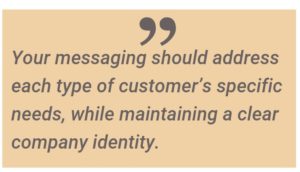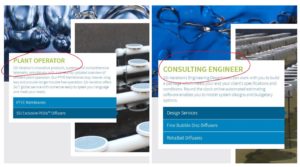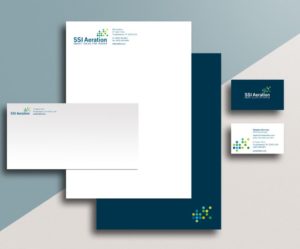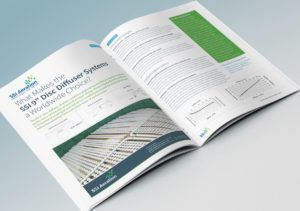The importance of directing the right message to the right audience
What is a marketing messaging strategy?
In B2B manufacturing marketing, your messaging strategy defines who you are and what you do. It’s the foundation for all your customer outreach initiatives and the driving force behind what positions you as a key player in the market.
Your message strategy is the backbone behind every piece of content you produce. This includes website copy, marketing materials such as brochures and information kits, blog posts and other marketing collateral such as product information, webinars, infographics, and white papers.
Messaging should be consistent, but you also need to consider your ideal customer persona (or multiple personas). Your messaging should address each type of customer’s specific needs, while maintaining a clear company identity.
Why a messaging strategy is important for manufacturing companies
The language that manufacturing companies use internally tends to differ from the external language used by their customers. This is fine for existing clients, but manufacturers need to consider the language they’re using as they reach out to new prospects and new buying contacts with existing clients. As old contacts leave a company, they are often replaced with new, younger points of contact.
Younger B2B buyers, particularly Millennials, use technology differently than their older counterparts, and this has implications for vendors who want to reach this growing audience of buyers.
Millennial buyers, often referred to as “digital natives,” are increasingly involved in product or service purchase decision-making for their companies.
Millennial buyers like to research a product or service online (either on a desktop or on their phone) before contacting a salesperson. Over 70% of B2B product or service searches start with a generic term, which is why it’s so important to speak your customers’ language.
What targeted messaging looks like
Our client SSI Aeration (SSIA), a company that manufactures diffusers for wastewater treatment plants, has multiple types of customers, so we worked with them to develop messaging for each specific customer profile—for example a treatment plant operator versus a consulting engineer.
The following image shows how we addressed each of these customers using SSIA’s website to segment each audience.
Image Source: SSIAeration.com
When a user visits the SSI Aeration website they are presented with a series of choices. They can browse the site by product, technology, and also by user type.
When a website visitor selects one of the user categories such as “Plant Operator,” or “Consulting Engineer” they are taken to a customized page which addresses this specific audience.
Image Source: SSIAeration.com
Craft a great positioning statement
Messaging strategy is not only about differentiating your message appropriately based on target audience. It’s also about communicating a cohesive company identity that can be shared across multiple media channels such as print, digital, and online video. Companies can do this with a powerful positioning statement. Elements of a positioning statement should include the following:
- Keep it short—No more than 10 to 15 words
- Keep it simple—no jargon or technical language, if possible
- Keep it flexible—it should work well across multiple channels and media
- Communicate a clear benefit or concept—This should be clearly communicated, but not overly long
Here are examples of some positioning statements from a few of our manufacturing clients.
- Package Pavement: “The premier supplier of packaged blacktop, concrete and custom products in the Northeastern United States.”
- Pawling Corporation: “Complete line of impact protection, entrance mats, athletic tile and parking products to protect your entire facility in any application.”
- JBT Wolf-tec: “If you ate or drank something today, there’s a good chance JBT technology played a critical role in its preparation.”
Your slogan is not your positioning statement
Slogans and positioning statements are meant to define your company and position you in the market. They share one thing in common—they’re part of an effective communication strategy. However, this doesn’t mean they’re the same thing.
While your messaging statement highlights your identity and will, ideally, explain who you are (e.g., “The premier supplier of XYZ in the Northeastern U.S.”), your slogan is much shorter and catchier.
A slogan is meant to be memorable, but it doesn’t typically impart a lot of information about you. A good slogan will connect with people emotionally, so they associate a feeling (safety, trust, excitement, etc.) with your brand. Slogans are an excellent way for a company to position itself in a way that’s both consistent and memorable.
Here are some examples of slogans from our manufacturing clients:
- SSI Aeration: Smart Ideas for Water
- Package Pavement: Concrete Solutions
- GTI Graphic Technology: truelight truecolor
A good, succinct slogan can be featured on a wide variety of marketing materials and collateral and is an important part of a comprehensive message strategy.
Here is an example of how SSI Aeration incorporates their slogan, “Smart Ideas For Water” on their digital, print materials and signage.
We helped SSI Aeration come up with a simple, powerful tagline that sums up what they do. The slogan and logo appear on their letterhead and business cards, as shown in this screenshot.
The SSI Aeration slogan, paired with the logo, looks as great on SSIA’s business cards as it does on their letterhead, and envelopes.
This is an example of how SSIA used their logo and slogan in a product brochure. Including the slogan on all print and digital materials helps maintain message consistency.
Conclusion
Every piece of content you produce should ideally follow a consistent messaging strategy. Crafting this strategy before you create content is a critical step to ensuring clarity and effectiveness across all your marketing touchpoints.
Your message strategy drives your content and can help you identify—and properly address—the different types of buying audiences who are likely to interact with your company, your products, and your services.







